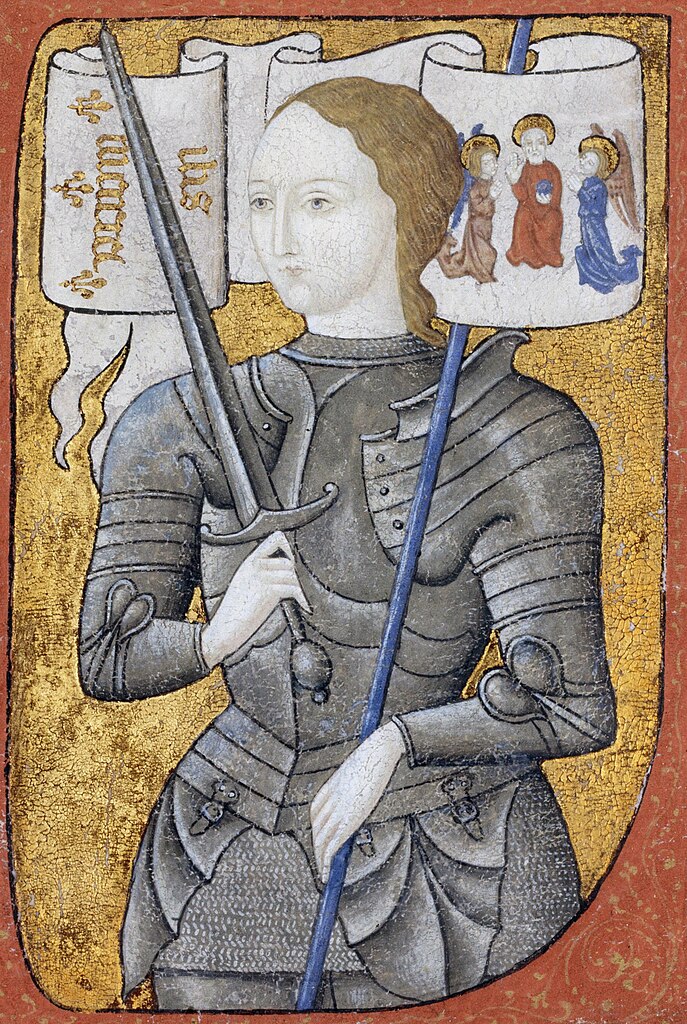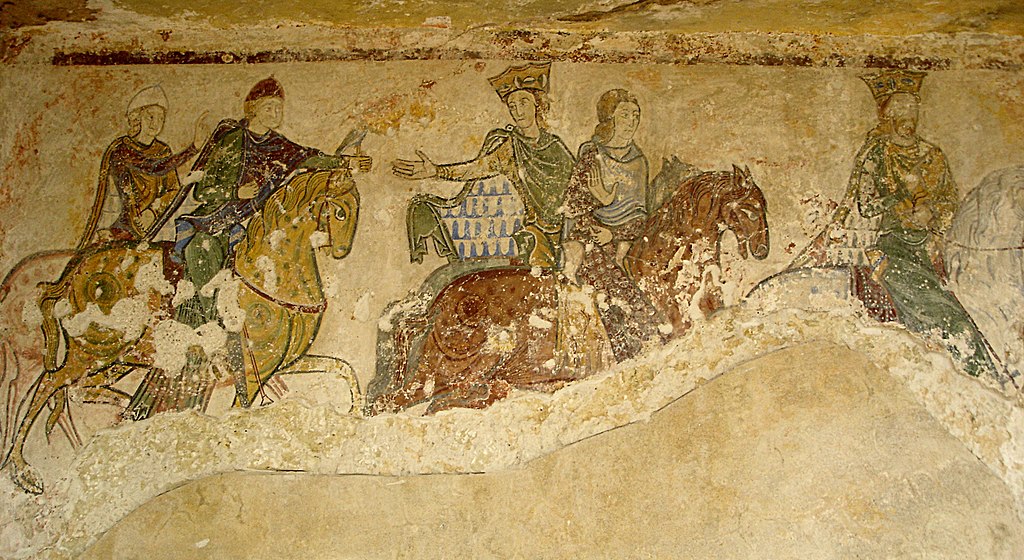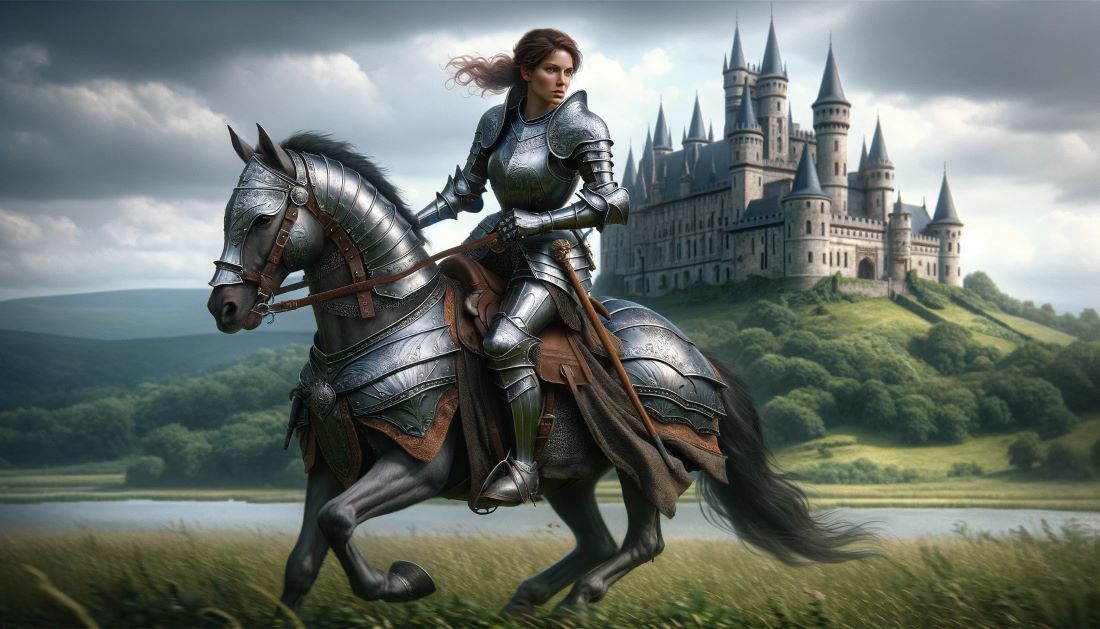Women knights in the Middle Ages stand as testaments to resilience and courage that defied the gender norms of their time. Despite limitations in historical records, we celebrate the existence of these formidable women who embraced the chivalric way of life, traditionally reserved for men. Contrary to popular belief, medieval knighthood wasn’t exclusively male; there were indeed women who bore arms, donned armor, and lived by the knightly virtues of honor and bravery. These exceptional individuals challenged societal expectations, proving that the spirit of chivalry transcended gender boundaries. This article aims to shed light on the stories of these women warriors, exploring their contributions and the enduring legacy they have left in history.
Joan of Arc
One of the most renowned examples of female chivalry in medieval history is Joan of Arc. She undeniably stands as a figure who transcends the typical limitations of her era, embodying the essence of courage and leadership in the face of insurmountable odds. Renowned for her pivotal role in the Hundred Years’ War against England, Joan of Arc inspired French forces with her conviction and divine guidance, leading to significant victories that changed the course of history. Her journey from a peasant girl to a military leader and eventually a saint of the Catholic Church underscores her extraordinary impact and solidifies her legacy as a symbol of bravery and divine inspiration in the annals of history.

Women Knights and Female Chivalric Orders
A significant number of historical sources describe the role of women as knights in crusader armies. Notably, the Byzantine chronicler Nicetas Choniates recorded that during the Second Crusade in 1147, women were among the Crusaders who dressed and fought like men. These women actively participated in battles in the Holy Land, challenging traditional roles assigned to them and showcasing their valor on the battlefield.
In a related account, there’s evidence of a distinctly military chivalric order for women. The Order of the Hatchet (Orden de la Hacha) in Catalonia was founded in 1149 by Raymond Berenger, Count of Barcelona, to honor the women who defended the town of Tortosa against a Moorish attack. Ladies admitted to this order received numerous privileges, including exemption from all taxes, and held precedence over men in public gatherings. The order is believed to have ceased to exist with the passing of its original members.
Women Knights in Medieval Byzantium and Serbia
Within the Serbian Empire under Tsar Dushan, according to the Dushan Code, women had the right to inherit their fathers’ knightly equipment and dispose of it as they wished, hinting at the possibility that they might have even worn it. A notable example is the daughter of Prince Lazar, who is known to have possessed knightly equipment and actively participated in military conflicts. This detail highlights the nuanced roles women could have in medieval Serbian society, challenging common perceptions of their involvement in warfare.
Bertrandon de la Broquière, a traveler who visited Constantinople in 1435, observed Empress Maria Palaiologina riding a horse in a masculine fashion. In the Middle Ages, women typically rode horses sideways due to their dresses, making this account particularly striking. Additionally, the two women who accompanied the Empress rode in the same manner and were dressed like men for hunting and war. This observation not only emphasizes the exceptional nature of such customs but also reflects broader themes of gender and social norms in the medieval Byzantine and Serbian contexts.
Warrior Queens and Women knights
Warrior queens like Eleanor of Aquitaine and Blanche of Castile were renowned for their military skills and ability to lead armies into battle. These queens defied the conventional expectations of their time, demonstrating not only leadership and strategic wisdom but also physical strength on the battlefield. Eleanor of Aquitaine, for example, played a key role in the Second Crusade, donning armor and riding alongside her troops, a rare sight that inspired both her contemporaries and future generations.

Similarly, Blanche of Castile, as regent for her son Louis IX of France, displayed extraordinary leadership in times of crisis. She organized the defense against the English and maintained the kingdom’s stability through her strategic decisions and presence on the battlefield. Her willingness to wear armor and charge into battle emphasizes the extent to which she was prepared to do whatever it took to protect her kingdom and assert her authority. These warrior queens exemplified the potential of women to hold power and exert influence not just through diplomatic or marital channels but also through direct military engagement, challenging narratives that confined women to passive roles in medieval society.
Conclusion
Documented women knights were uncommon, but they undeniably defied gender norms by actively participating in warfare. From iconic figures like Joan of Arc to warrior queens like Eleanor of Aquitaine, these women challenged expectations. Though not all received formal recognition, they embodied the ideals of chivalry through their courage and prowess. Their legacy serves as a testament to the power of women to break barriers and leave their mark on history.
Historical Challenge: Can You Conquer the Past?
Answer more than 18 questions correctly, and you will win a copy of History Chronicles Magazine Vol 1! Take our interactive history quiz now and put your knowledge to the test!

